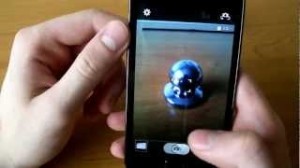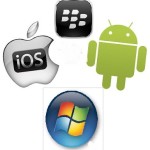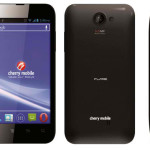Camera
Pictures are worth a thousand words. This holds true to today’s culture. A person can believe easier when you show them a picture than telling them the story. There is also a saying that is going around the web, which is “Picutre, or didn’t happen”. As you can see, pictures are important especially in distributing information.
There are a lot of advances in terms of giving users the freedom and options in taking pictures using their own smartphones. They provide their own phones with higher resolutions and editing options to boot.
Android – Google
The Android Jelly Bean camera system brings in more changes. It’s faster and has a better review system making editing and removing images simpler.
A new feature which arrived as part of the Android 4.2 update is photo sphere – allowing you to take a 360 degree picture of your surroundings for a slightly surreal image. It’s more gimmick than practical, but it’s fun to play with.
There are also varying scene modes, customizable levels white balance and exposure, all helping you to create your ideal shot. A panoramic mode and photo editing are also thrown in, alongside the impressive zero shutter lag.
iOS – Apple
iOS 6 builds upon the work from iOS 5, debuted on the iPhone 4S. Continuing the simplicity theme, settings are all sorted automatically to allow users to focus on the picture they want instead of messing about with ISO modes.
Focus is also automatic, unless you specify a certain area by touching the screen. For those who require a physical shutter button, iOS also allows the use of the up volume button as well as the on screen option.
Windows Phone 8- Microsoft
Microsoft hasn’t skimped on Windows Phone 8’s Camera app, getting a new simple, clean look, with a small menu button that accesses the camera’s various settings.
A stipulation of handsets which run Windows Phone is they must feature a physical shutter button, which makes taking pictures and launching the app an easier experience.
Blackberry 10 – Blackberry
In terms of features the BlackBerry 10 camera app is the least well-equipped, with very few options to play with.
Luckily shutter speed to pretty decent and an excellent built in picture editing mode comes to the aid of the BlackBerry OS, plus like on iOS you can use the volume keys on the side of the handset to take photos.
Apps
Apps are big business and the selection available to customers can make or break a person’s decision to buy a handset.
Jelly Bean and iOS 6 are far and away the winners in terms of volume with both Google Play and the App Store boasting over 700,000 apps each.
While there’s a lot of dross in both stores there’s also a lot of quality and the sheer size of the libraries and the market dominance the two enjoy means the big companies are happy to develop for the platforms.
Both app stores are well presented and are easy to navigate with plenty of top lists on show allowing you to check out the best apps around.
The news isn’t quite so rosy for Windows Phone 8 and BlackBerry 10 which can’t match the number of apps which iOS and Android enjoy.
While BlackBerry is keen to stress it is quality not quantity that counts the fact of the matter is big name applications are missing from both BlackBerry World and the Windows Phone MarketPlace.
Both stores will continue to grow over the coming months but for anyone who wants all the big apps right now it’s really a choice between iOS 6 or Android Jelly Bean.
We weren’t overly impressed with the layout of BlackBerry World, but then again the Android Market wasn’t exactly the nicest place to be back in the day, so we’re willing to give BlackBerry a bit of time to improve the UI.
Maps
Android – Google
Android Jelly Bean, somewhat unsurprisingly, bases its mapping system on the well known and excellent Google Maps, bringing Street View, 3D and indoor mapping, free turn-by-turn navigation and live traffic information.
Integrating with Google Now, the mapping system continues the sat-nav experience for both pedestrians and motorists, providing details of how and when to leave to get to your appointments on time, plus public transport is also present if walking and driving is out of the question.
iOS – Apple
iOS has traditionally also based their mapping on Google’s offering, but this all changed with iOS 6 when Apple Maps was launched.
Unfortunately Apple Maps hasn’t been able to live up to all the hype it was given during the iOS 6 launch event as people found it littered with mistakes including incorrect locations and borked maps.
It’s so bad in fact that Apple CEO Tim Cook came out and advised iOS 6 users to use competitors’ solutions until it works out all the issues – and we’re still waiting to get the all clear to use it again from Apple HQ.
Windows Phone 8 – Microsoft
Windows Phone 8 surprisingly ditches Microsoft’s proprietary Bing Maps. On the other hand, its new system is hardly shocking.
Windows Phone 8 now brings in the Nokia mapping system, bringing 3D street navigation, and Nokia’s Navteq Traffic Service.
It’s not a feature-packed as Google’s offering nor is it as attractive to look at, but it does the job in hand.
Blackberry 10 – Blackberry
BlackBerry (right) has teamed up with TomTom to provide its Maps app on BlackBerry 10 and like Windows Phone 8 is perfectly serviceable, if a bit light on features and design.
The maps themselves give a pretty good account of the lie of the land, although as an app it’s not as polished as the excellent Google Maps.
There are far fewer features as well with just the standard map view available, no satellite overlay, no street view, no flyover – but at least it knows where places are.
Overall Android has the best map feature, Google Maps. Android and iOS are the top dogs in the app market with their wide range of applications available for the users to use. For the camera feature, it’s more of a battle between iOS and Android. iOS with its familiar and reliable features and Android with its new features that are still reliable and fresh for Android users.









